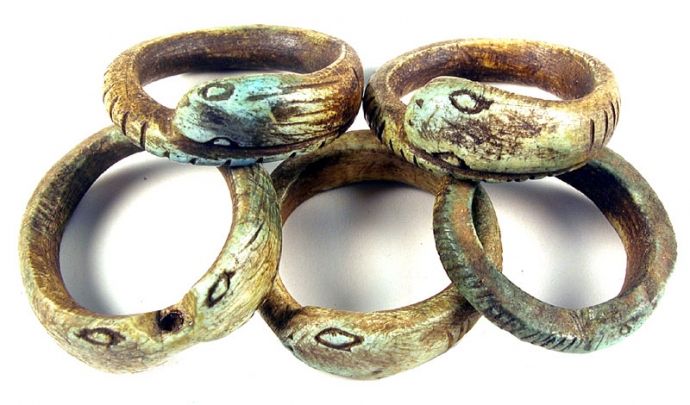The trend of jewelry is as old as the earliest civilization. Nevertheless, it was not as refined as the modern ones. Historians presuppose that man began wearing jewelry after he voyaged to Europe around 35,000 to 45,000 years ago. The principle of putting on these metals of embellishment was often connected with mystical or religious beliefs. The word ‘jewelry’ is an early descent of the Latin ‘jocale'(plaything), while ‘jewel’ obtained an anglicized inflection in the 13th century from the French ‘jouel’.
Ancient jewelry was made of mollusks, shells, pebbles, berries, shells, or animal bones. A newly discovered nassarius kraussianus or mollusk shells punctured into beads is now being considered as one of the oldest examples of man-made jewelry. This antique jewelry was unearthed from a cave in Blombos, South Africa, now alleged to age between 75,000 to 1, 00,000 years!

At the outset, jewelry was made from easily obtainable natural materials like teeth, animal bones, shells, wood, and carved stones. Research suggests that jewelry developed as a purposeful item used for clasping articles of clothing together. Soon after, it was used for purely artistic purpose or as a religious or spiritual symbol or kept in museums like Sadigh Gallery .
Necklaces were the most fashionable jewelry item in ancient times. Gold, well-known for its luster, was vastly in demand. The Greeks adorned themselves with beautiful jewelry. Many of their valuable items were derived from gold filigree of cord openwork in naturalistic designs of leaves, flowers, and animals. The Romans had incredible affinity for jewelry. Rings of jet,gold, and other expensive materials were worn by both the sexes. Time and again, one would find them wearing lots of jewels on the same finger!
An expert from Sadigh Gallery claimed that,with changing civilizations and times, jewelry came to be recognized as a symbol of status and wealth. One of the earliest identified modern civilizations, the Harappan Civilization, showcased clear evidence between the rich and the poor through the utilization of jewelry. While the rich wore silver and gold ornaments, the poor adorned themselves with bronze and copper articles. By 2000 B.C., the Egyptians began using gemstones in brooches, bracelets, headdresses, rings and pendants. They also assumed that valued gems had magical powers and would bring them good fortune. Although gold was their favorite metal, Egyptians also used soapstone, lapis lazuli, copper, and camelian. The 18th Dynasty of Egyptians primarily preferred silver and gold engraved jewelry which were inlaid with valuable and semi-precious stones.
As time began to move on, jewelry trends transformed to infuse newer styles. The contemporary age has witnessed women being connected with jewelry a lot more than men. And why not, women love to ornament themselves and be the cynosure of every eye. The modern man loves to show off a stylish ring or bracelet, not to speak of the little earrings that metropolitan men ramble about. Thus, one can construe that civilizations may come and go, but the love for jewelry will remain as long as individuals exists.

